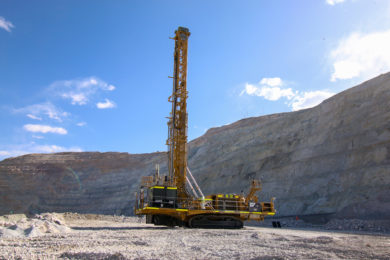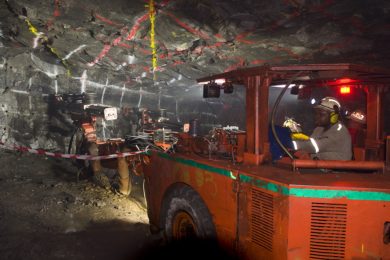Environmental Clean Technologies has completed the ‘basic design’ for the Matmor component of its planned India project. The aim of the project is to deliver a pilot scale demonstration of ECT’s two leading technologies under development; Matmor and Coldry.
- The Matmor technology is the world’s first and only lignite-based primary iron making process, capable of replacing metallurgical coal and high-grade lump iron ore with lower-cost alternative raw materials due to its unique chemistry and furnace design
- The completion of the basic design package allows the plant design to proceed to tender following the completion of the Coldry basic design package, targeted for end June 2018.
The completion of the basic design package for the Matmor pilot plant is a significant milestone in the preparation for the company’s integrated Coldry demonstration and Matmor pilot plant project with NLC India Ltd (NLCIL) and NMDC Ltd.
Typically, lignite can’t be used in traditional metallurgical applications such as the blast furnace due to its high moisture and volatile matter content.
Matmor’s breakthrough lies in its ability to remove the moisture (via the Coldry technology) and harnesses the natural chemistry of lignite via a unique process and furnace design built around a fundamentally different chemical pathway to that of a blast furnace.
The value proposition for Matmor is characterised by two distinct advantages:
- Alternative raw material opportunity – liberating and monetising the ‘above ground ore body’ and decoupling from coking coal
- Lower plant cost.
There exists a vast ‘above ground orebody’ in the form of iron ore mine fines and slimes, and industrial wastes such as mill-scale and nickel refinery tailings.
Current processes can’t use iron-rich fines and wastes without expensive pre-processing.
Matmor liberates this typically stranded, ‘waste’ resource in an efficient, cost-effective manner, while simultaneously decoupling steelmaking from relatively expensive coking coal.
The Matmor plant, incorporating Coldry as its front-end raw material preparation stage, is up to 40% less capital intensive than an equivalent capacity blast furnace or coal-based DRI plant.
Relatively low operating temperatures reduce the capital cost of plant and smaller equipment sizes, when compared to existing steel production processes, result in reduced land area requirements.
Matmor’s efficient reaction kinetics result in lower reductant requirements when compared to Direct Reduced Iron (DRI) technologies.
Coldry is a unique, zero-emission, lignite upgrading technology capable of producing a solid fuel for use in power generation, industrial thermal applications and as a feedstock to higher-value downstream applications such as coal to liquids, gas, fertiliser, chemicals, chars, activated carbon, hydrogen and steelmaking via the Matmor technology. Coldry solid fuel is significantly less CO2 intensive than lignite.
In the diagram (1) Matmor Retort & ancillary plant: 2 t/h metal output (Coldry plant not shown); (2) Reduced pellet transition conveyor; (3) Reduced pellet storage silo; (4) Melting & casting.
The India project builds on the fundamental and applied research and developmentconducted by the company at its Australian test facility northwest of Melbourne and seeks to scale up the Matmor technology from its current capacity of ~40 kg/h to ~2 t/h, ahead of a subsequent scale up to a commercial module.
ECT India Chairman and Managing Director Ashley Moore commented, “We’ve worked with one of India’s leading pyro-metallurgical engineers, MN Dastur, to deliver this design package and look forward to moving to tender following the signing of our Master Project Agreement, completion of funding arrangements and conclusion of the associated Coldry basic design package.
“The basic design package for the Coldry component of the project is also nearing completion. Largely derived from the work previously performed by Melbourne-based engineering firm Arup, it includes changes that cater for the input of multiple raw materials (iron ore and lignite) and integration with the Matmor technology platform.”
The parties have spent the past several years developing the business relationships, funding and corporate/legal structure for the Project. As per recent announcements, the parties are poised to sign the Master Project Agreement (MPA) following completion of respective Board and Government approvals.
The MPA provides the framework for the broad commercial arrangements needed to execute the R&D project, including funding, technical development, engineering, construction, commissioning and operational R&D activities. Detailed agreements covering these matters will be negotiated after the MPA is signed. The MPA also clearly articulates the intent for the Intellectual Property generated in this R&D work to be utilised to underpin commercial projects, and sets the value sharing structure between the parties from the resulting projects.
The parties have jointly set the target to sign the MPA and achieve financial close by 30 June 2018.
India’s growth plans highlight complex challenges in the acquisition of suitable and sufficient raw materials to support its steel industry.
While domestic iron ore supplies could largely support national targets, India’s domestic mines produce soft ore, which generate large quantities of fine material (small particle size) which are unsuited to blast furnace operations without expensive processing and upgrading.
Additionally, India’s domestic coking coal supplies are virtually non-existent, and the rising cost of imported coking coal is driving the national security need to develop technologies that can mitigate the need to import coking coal.
Ministry of Steel Secretary, Ms Aruna Sharma recently stated, “We have to adopt a new technology to reduce use of coking coal in steel making as India and most of the Asian countries – minus China – do not have much coking coal reserves”.
This project enables the company to demonstrate its Coldry and Matmor technologies and deliver value to India by enabling the transformation of India’s lignite and low-grade iron ore resources into feedstocks that will support national growth objectives.
For NLCIL & NMDC, the project represents the ability to transform low rank natural resources into higher value products that will support national growth objectives for energy and steelmaking as well as participate in future royalty sharing from income derived from the global deployment of ECT’s technologies.
Upon successful completion of the R&D phase, the MPA provides the basis for the subsequent commercial deployment of the technologies, which may entail significant future investment. For example, the scope within the techno-economic feasibility (TEF) study (8 August 2016) was for a Matmor plant with a capacity of 500,000 t/y of finished steel billet, with an estimated capital investment of around A$300 million.
The parties have agreed (subject to signing of the MPA) to the collaborative development of ECT’s patented technologies, commencing with an integrated Coldry-Matmor pilot scale demonstration plant to be deployed in India within an existing NLCIL mine and power station complex located southwest of Chennai, the capital of Tamil Nadu State.
This is the largest R&D project ever undertaken by either NLCIL or NMDC and their first with an Australian company.









